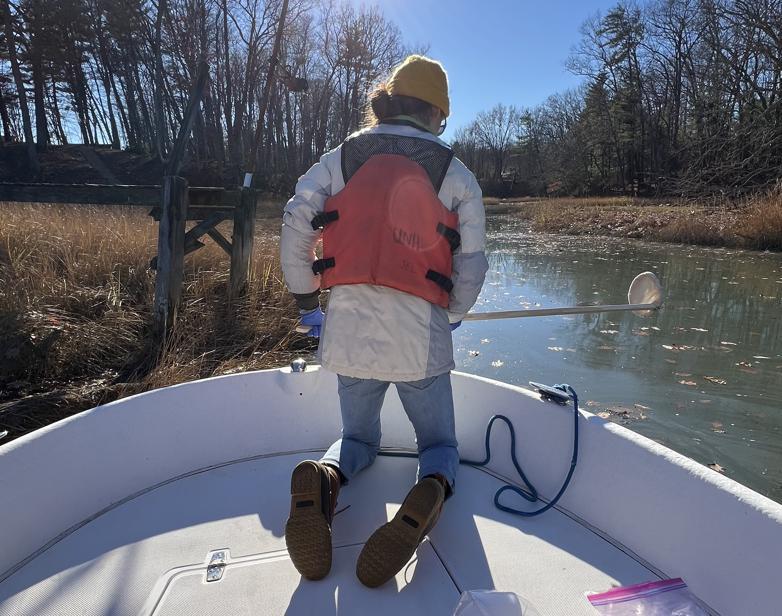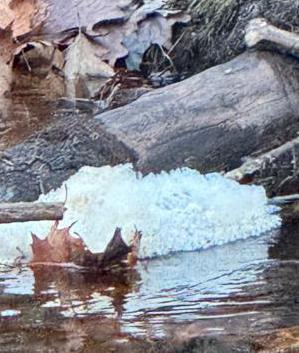
CONCORD, N.H. — New research has found high concentrations of toxic PFAS chemicals in samples of foam that forms on two Seacoast waterways, according to preliminary results from the University of New Hampshire.
Some of the foam tested by UNH researchers had anywhere from seven to 70 times as much of the “forever chemical’’ PFAS in it compared to the water just below it, said Paula Mouser, professor of civil and environmental engineering at UNH.
The research was part of a small-scale pilot program that tested samples from Great Bay Estuary and Berry’s Brook in Rye, after citizen scientists asked the university to help investigate the foam.
While foam can form naturally as a result of rich organic material such as decaying leaves, it can also be the result of contaminants like PFAS — but you can’t necessarily tell what caused the foam just by looking at it, according to Mouser.
“When community members live in these areas they know are impacted by potential sources of contaminants, they can get concerned about seeing things like that,’’ said Mouser.
The area Mouser and the citizen scientists studied was near two Superfund Sites on the Seacoast where PFAS have been found, including the former Pease Airforce Base, now the Pease Tradeport, where firefighting foam containing the chemical had been sprayed, and the Coakley Landfill.
PFAS are a man-made class of chemicals common in many consumer products from stain-resistant couches and fabrics to non-stick cooking pans and waterproof jackets.
But too much exposure to PFAS can lead to health problems for humans, such as increased risk for some kinds of cancer, decreased fertility or increased high blood pressure in pregnant women, and developmental effects or delays in children, according to the US Environmental Protection Agency. Research is ongoing to figure out how different levels of exposure impact health.
That backdrop led to local concern about the foam.
“We’re seeing these foam accumulations in the local waterways where people recreate, and we wanted to know: Is PFAS accumulating in it?’’ said Andrea Amico, a Portsmouth resident, who has been advocating on PFAS issues since 2014. “If so, the community should be aware of that. And people should take steps to prevent coming into contact with the foam.’’
The New Hampshire’s Department of Environmental Services provides similar advice, recommending people avoid contact with any surface water foam since foam can contain a much higher level of PFAS than the surrounding water.
Amico credits a personal exposure for sparking her advocacy and citizen science around PFAS. She said her family was exposed to the substance when her husband worked for a company located at the Pease Tradeport and her children attended daycare there.
“Prior to knowing there was PFAS in the water, my kids drank water there every day,’’ she said. Along with two other moms, she went on to push for blood testing to determine how much PFAS was in their blood, in addition to testing for health effects to the community, results that are still pending.
She said it was on a nature walk during the COVID pandemic in 2020 that she remembers first seeing foam accumulating along waterways.
She pushed for testing of the foam she was seeing around the Seacoast, especially since four other states have found foam containing PFAS, including Michigan, Wisconsin, North Carolina, and Minnesota.
Last July, she began working with Mouser on the research.
“It was validating to have the sample done and to know for sure that PFAS is detected in the foam of our local waterways,’’ Amico said.
Amanda Gokee can be reached at amanda.gokee@globe.com. Follow her @amanda_gokee.

